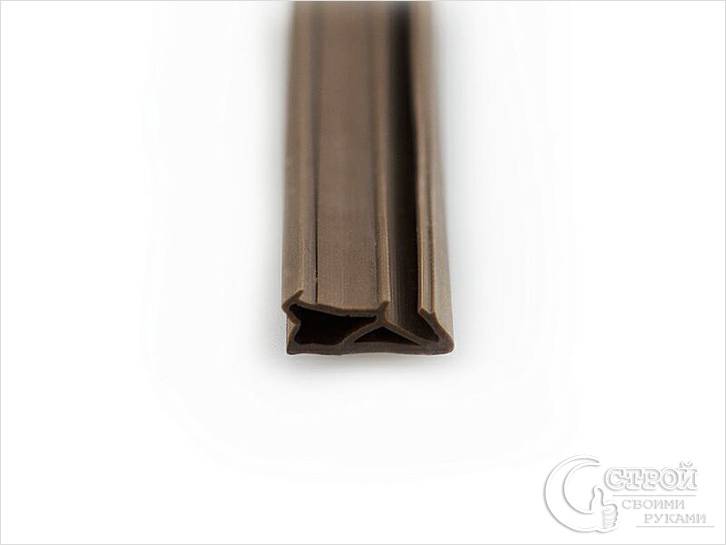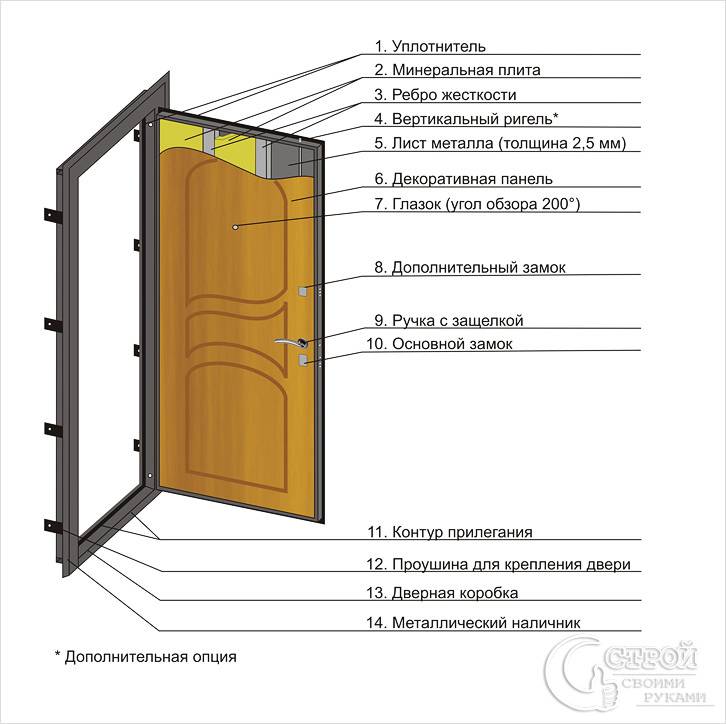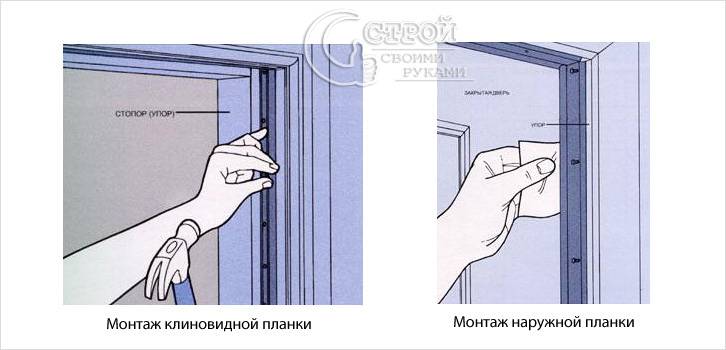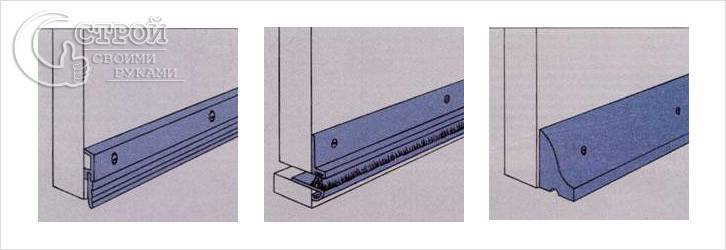Entrance door seal
If you begin to notice that a draft has appeared in your apartment, or an unpleasant smell has begun to come from the entrance, this is a signal that a door seal is required. Such a problem definitely does not bypass those people in whose apartment a metal door is installed. For this reason, we suggest that you consider how you can fix or prevent the problem by sealing the door yourself.
Sealant selection and classification
Often, metal doors do not cope with their main role, namely the preservation of heat in the house. Although these doors are insulated, the result often leaves much to be desired. You can choose a special sealant that can solve the problem of drafts and unpleasant odors coming from the entrance. There are a large number of sealants that differ in type and method of application. For example, some are glued around the entire perimeter of the door. If the door has a double porch, then the seal is glued to each of them. At the same time, it is recommended to choose a heater in each individual case individually. So, for example, if you buy a very thick sealant, then it can cause obvious problems. Conversely, a very thin material will not give the desired result.
Seals for metal doors are classified according to several technical characteristics.
- Material type. It can be foam rubber, plastic, polyethylene foam, rubber, silicone.
- Design. The seal can be equipped with a clamping metal rail or made from one material.
- Mounting method and system. Seals are either self-adhesive or self-tapping. As for the latter, special strips can only be installed on wooden doors.
If you have a desire, then the seal can be made independently. To do this, you can use foam rubber, after wrapping it in artificial leather or leatherette.
![]()
For metal doors, seals are sold in rolls. One roll can be up to six meters. If the door is standard, then one roll will be enough for sealing. Remember that for metal doors it is best to buy a self-adhesive seal.
Sealant for metal doors
The choice of sealant will directly depend on the size of the gap that needs to be eliminated. For example, if the gap with the door closed is from one to four millimeters, then you can purchase a rectangular seal, for example, from polyethylene foam, PVC, foam rubber. But in most cases, rubber seals are used for metal doors. They can have different shapes, the section of which resembles the letters of the Latin alphabet:
- C - the profile is used for those slots that have a thickness of up to three millimeters.
- K - the profile is similar to the first.
- P and V - the profile is able to eliminate gaps with a thickness of three to five millimeters.
- O and D - the profile is mounted in those doors where the gap has a thickness of up to seven millimeters.

Seals are available in different colors. This allows you to individually match the color to your door. So, the aesthetics of the doors will not deteriorate in any way. The most common colors are white, black and brown.
Note! According to some studies, the dye can reduce the quality of rubber. For this reason, it is best to sacrifice aesthetics and stick on a standard black seal!
The main requirement for all seals is the sealing of the door. Based on this, the seal must meet high standards. The seal must be waterproof and airtight, must provide excellent shock absorption of the door leaf when it is closed and slammed. When closing a metal door, a light and soft click should be heard, and not rattling and noise. Among other things, the sealant should not freeze and harden in the cold. Regardless of the conditions in which it is operated, the sealant must retain its basic characteristics under any circumstances.
Mounting on a metal door

If you have a branded door, then the manufacturer makes a profile in which there is already a specially designated place for laying the seal. From the point of view of tightness, such metal doors are the most reliable. Therefore, when buying them, pay attention to such a detail.
In the event that you do not have the funds for such a door, the seal should be purchased and installed by yourself. Using self-adhesive tape, this is very easy to do. The most important thing is to choose the appropriate thickness. We talked about this above. Gluing the seal is quite simple. Wrap plasticine in polyethylene and place it between the door and the frame. Then close the door tightly and open it. As a result, you will get a finished cast of the required thickness. As for the sealing sticker, do not rush to immediately remove the protective layer from the entire tape. As the film peels off, glue the seal to the frame. At the same time, press it firmly.
Note! In the event that the seal peels off after a few days or weeks, then glue it with Moment glue.
Wooden door seal

For such doors today it is customary to use a variety of floor rails. They allow you to prevent the appearance of drafts or get rid of them altogether. There are several types of them.
- Wedge plank.
- Plastic tube.
- Plastic or metal strips with a brush, etc.
Consider how to properly install them.

Installation of the wedge strip. The plank must be cut to fit the top of the doorway, as well as the sides of the two sides. At the joints, the strips are cut at an angle of 45 °. In places where there are hinges and a door lock, the bar must be cut. Further, she is nailed. All work will not take you much time.
Installation of the outer bar. The bar, as in the first case, is cut strictly according to the dimensions of the doorway. But only now the bar is screwed on with screws. After its installation, a sheet of paper should fit between the closed door and the plank.
As for sealing the bottom of the door, a slightly different technology and method of using slats is used here. The flashing strips are stuffed to the inside front of the door. It should be noted that there are also several types of slats, each of which has distinctive features.
Flat threshold rails. They are made of plastic or aluminum base. On them, in turn, a rubber plate or brush is attached. They can be used for both external and internal doors.
Planks with plastic shield. They prevent moisture from entering the room. In most cases, they are used to seal the outer door.

Combined rails. They consist of a metal bar as well as a nylon brush. The bar is fixed to the threshold, and the brush to the door. The bar on the threshold prevents the penetration of water into the room, as it has a special groove.
So, some features of the installation of such strips.
Installation of a flat threshold bar. Previously, the bar is cut to the width of the doorway. After it is screwed to the bottom of the door. This bar should be as close to the threshold as possible. But it should not interfere with the free opening of doors. Some types of such slats are equipped with special holes for screws, which makes it easy to adjust them.

Installation of a combined plank. In this case, as in the first, the bar and brush are cut off along the width of the threshold. The plank is screwed to the threshold, with the overhanging edge of the plank facing the inside of the door.
As for the installation of the brush, after installation it should exert a slight pressure on the bar. The brush is screwed to the bottom of the door with self-tapping screws.
Mounting the rail on the outer door. Similarly, as in all other cases, the bar is cut to size. The bar should be screwed to the door when closed. It is very important not to use screws that can rust - this can cause the doors to rot.
So, we have considered the main methods of sealing both metal doors and wooden ones. If you know other methods of sealing doors, then write about it in the comments to this article.
Video
Insulation of doors with a seal:
